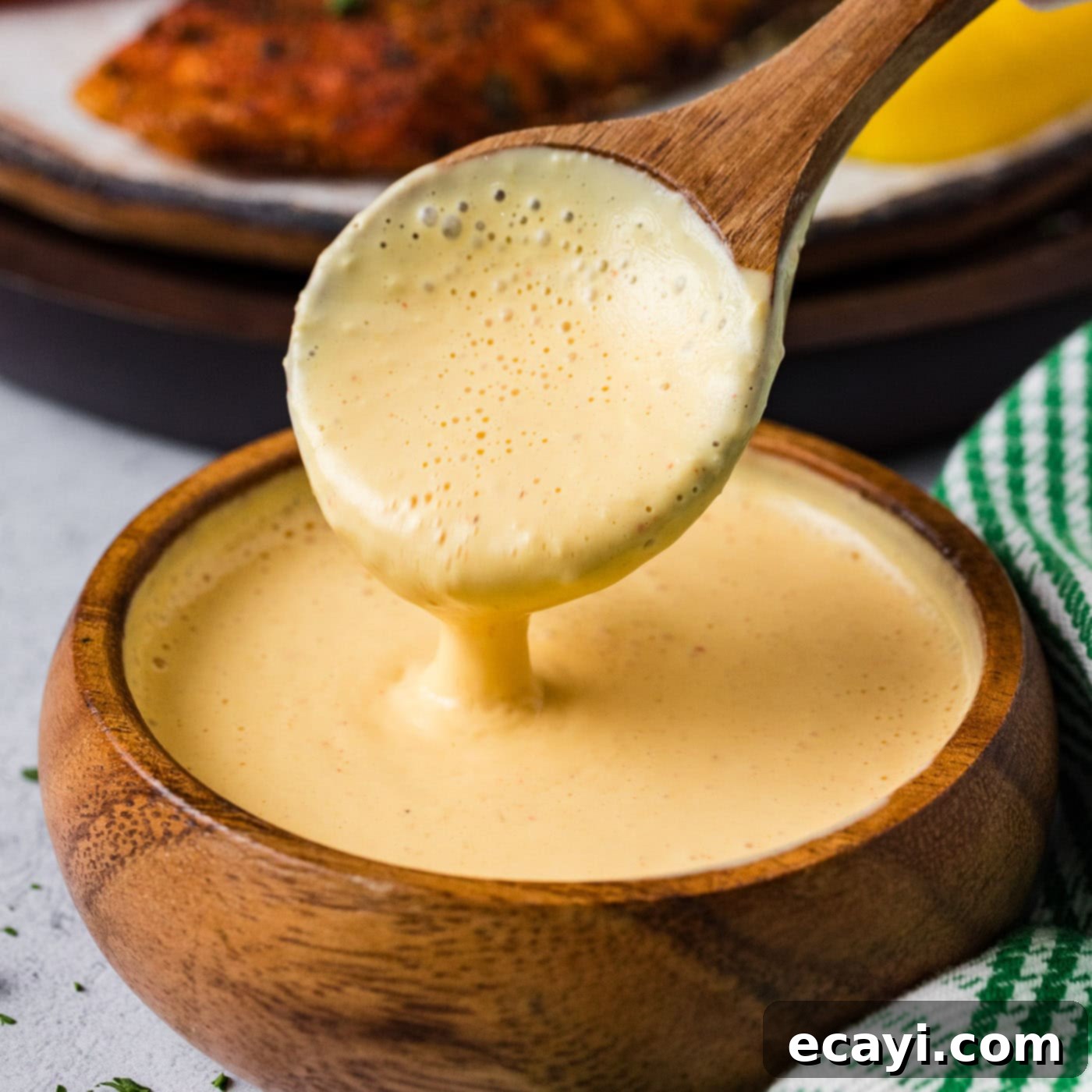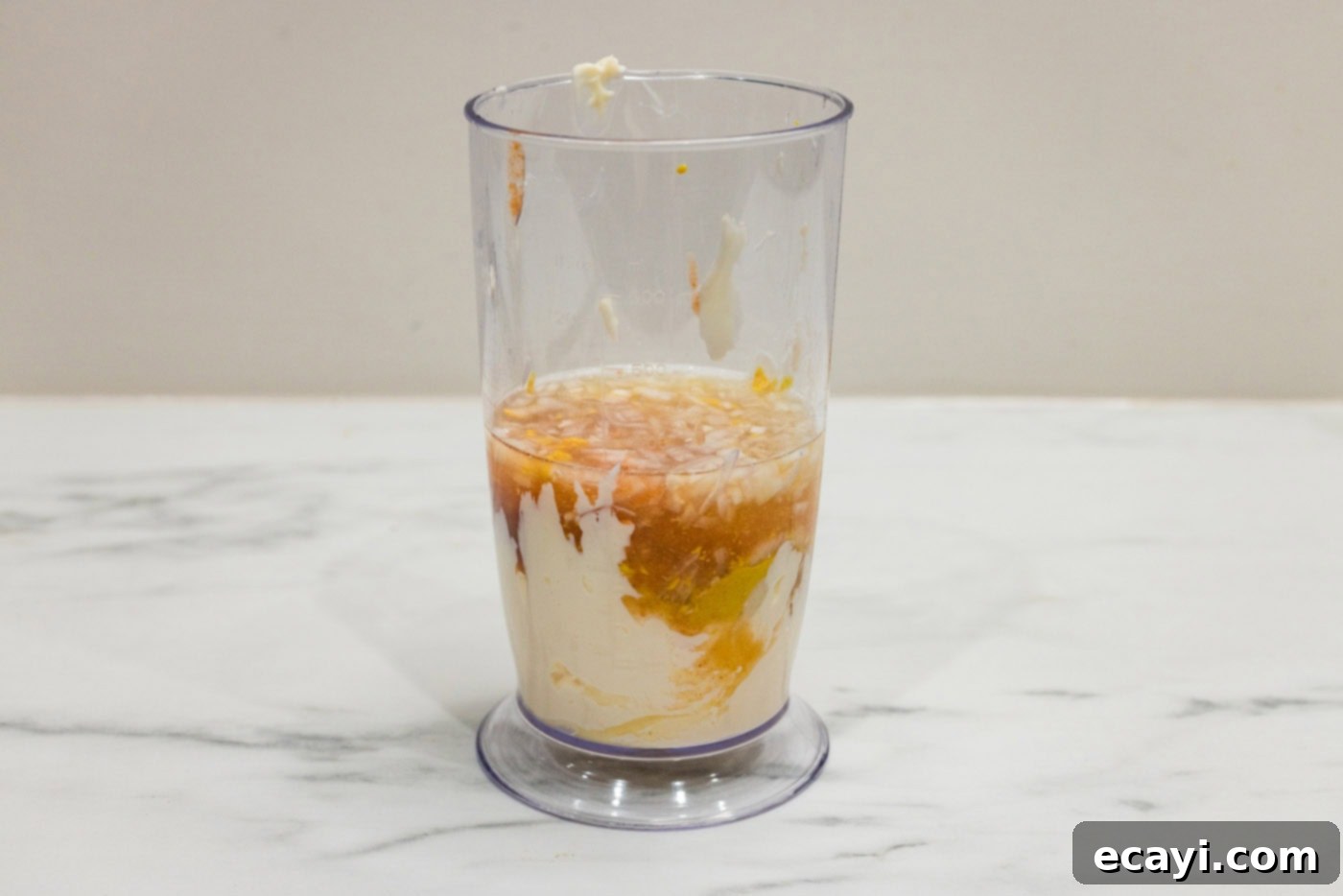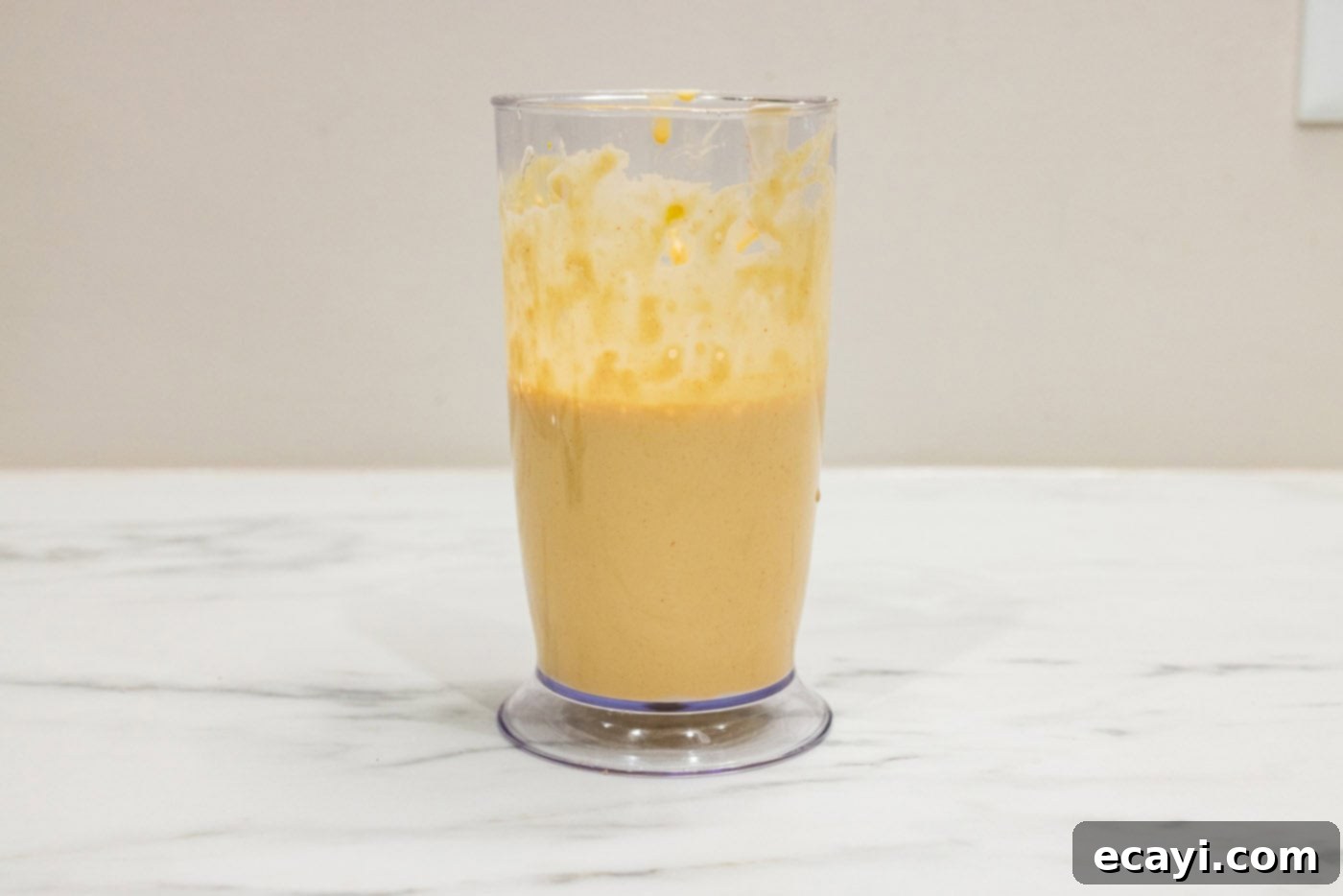Homemade Remoulade Sauce: The Ultimate Creamy, Zesty Dip for Seafood & Fried Favorites
Transform your favorite fried foods, breaded delights, and seafood dishes with a generous dollop of this incredibly creamy homemade remoulade sauce. Bursting with a zesty, tangy kick, it’s the perfect accompaniment that elevates any meal, offering a vibrant contrast to rich textures and flavors. Forget store-bought versions; crafting this classic condiment from scratch is surprisingly easy and yields a fresh, dynamic flavor that you’ll absolutely adore.
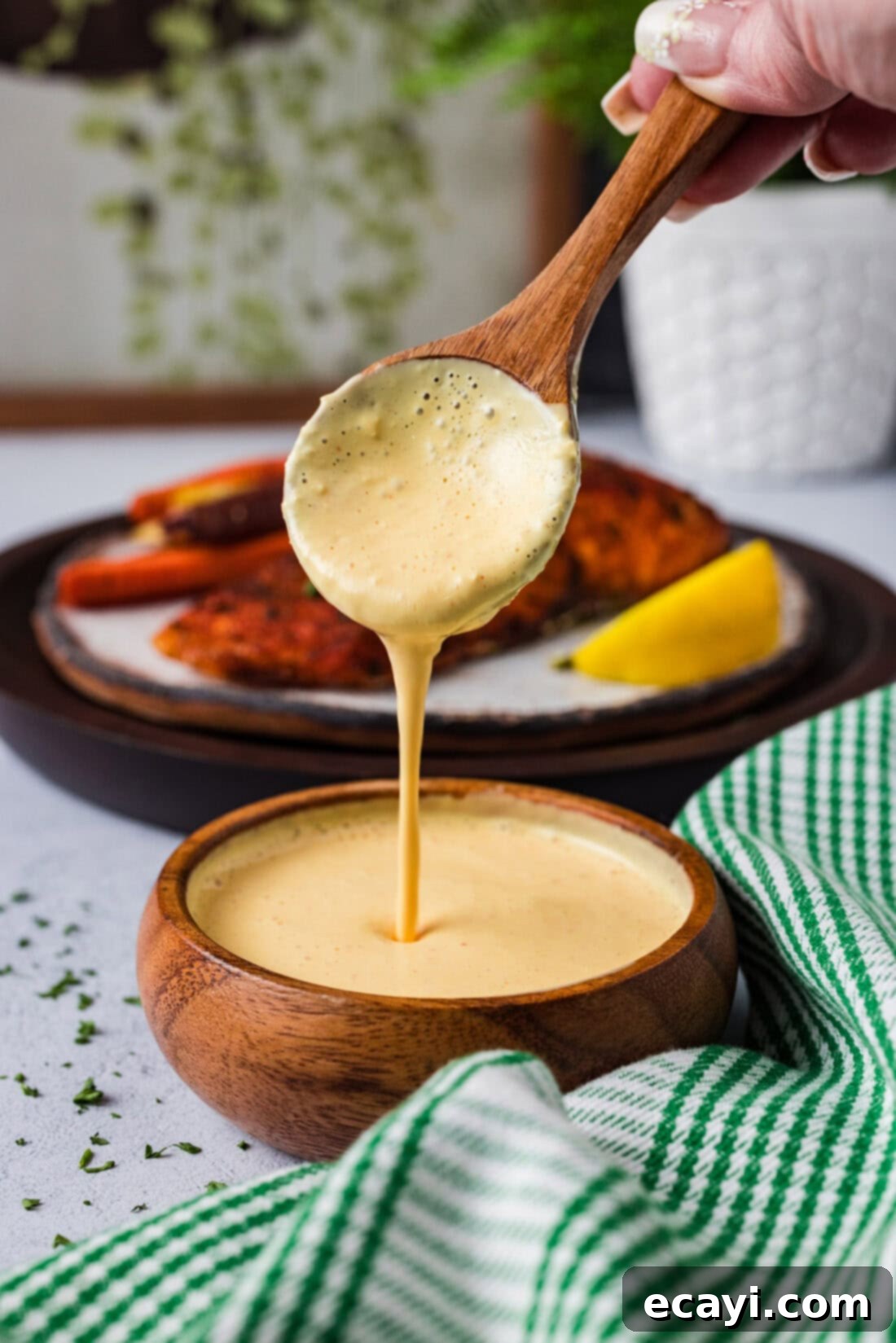
Why This Easy Remoulade Recipe is a Must-Try
Remoulade sauce is a culinary chameleon, known for its myriad variations across different cuisines. Historically, this versatile sauce has deep roots in French culinary traditions, later adapted and perfected within the vibrant world of Creole cuisine, particularly in New Orleans. Some recipes opt for a caper or anchovy infusion, while others choose an oil-based foundation. Our rendition, however, embraces a luscious mayonnaise base, delivering a rich, creamy texture that perfectly complements its zesty profile. We’ve meticulously tweaked and tested this recipe to capture the authentic spirit of a famous New Orleans-style remoulade, and the results are truly exceptional!
Beyond its rich heritage, this creamy remoulade sauce is a true kitchen MVP due to its incredible versatility. Its bright, tangy, and slightly spicy notes make it suitable for a wide array of dishes. Imagine drizzling it generously over succulent shrimp po’ boys, dipping crispy fried green tomatoes into its creamy embrace, or serving it as the ultimate partner for perfectly golden crab cakes. This sauce isn’t just a condiment; it’s a flavor enhancer that brings a touch of gourmet flair to everyday meals and special occasions alike.
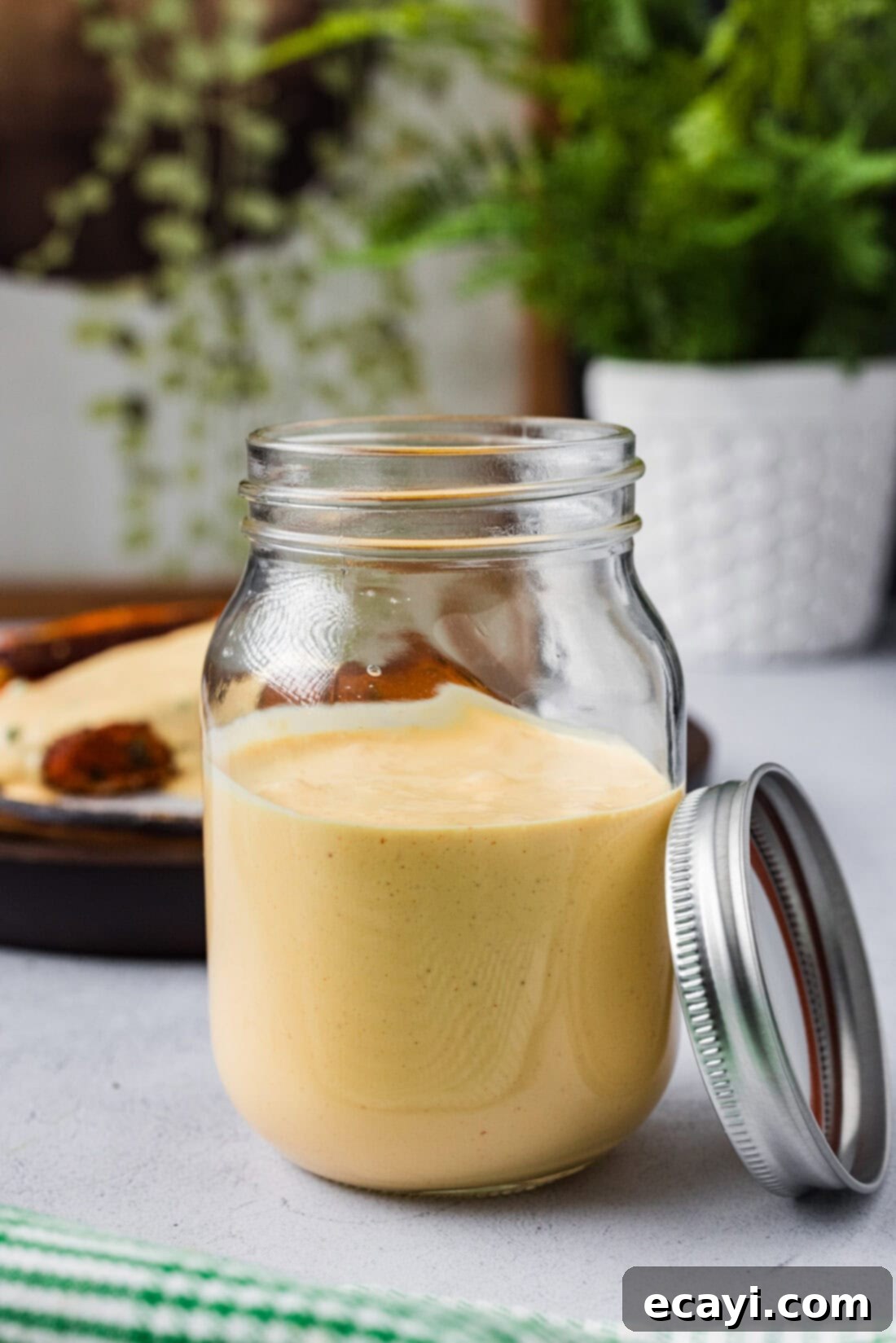
Key Ingredients for Authentic Remoulade Sauce
Crafting this delicious remoulade requires just a handful of common ingredients that combine to create an explosion of flavor. You can find all specific measurements and detailed instructions in the printable recipe card located at the end of this post.
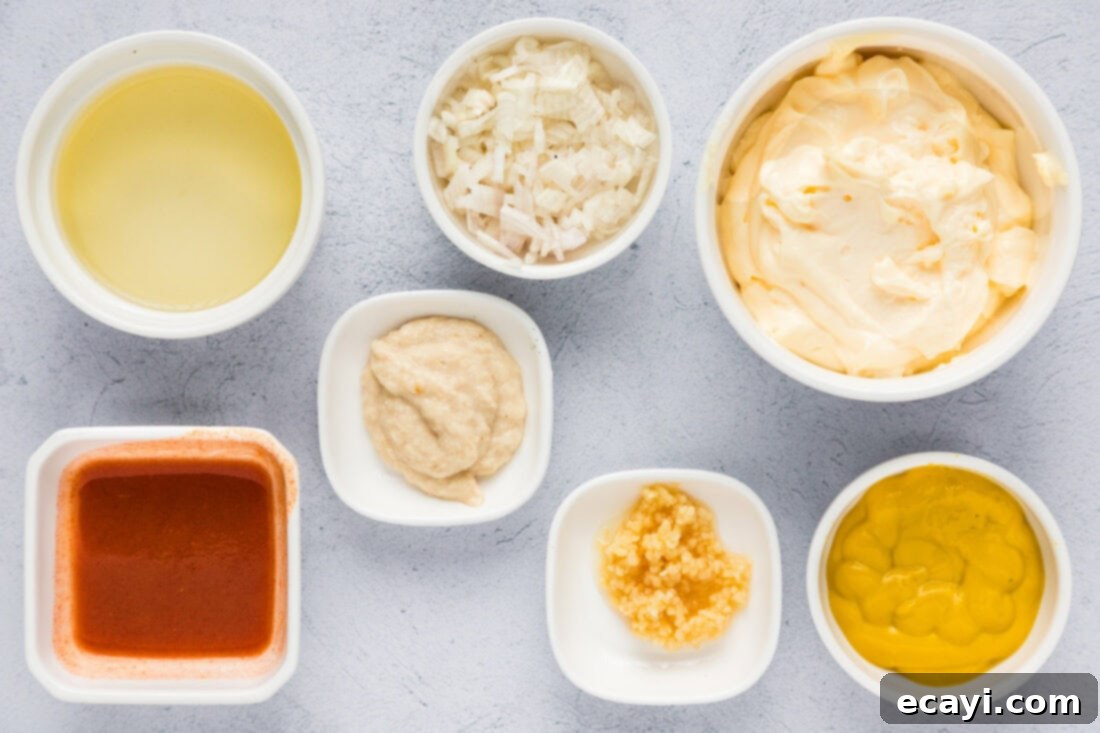
Ingredient Breakdown & Customization Tips
Understanding each ingredient’s role allows for perfect execution and creative substitutions:
- MAYO (Mayonnaise) – This forms the luscious, creamy backbone of our remoulade sauce. For the richest texture and most authentic flavor, we highly recommend using full-fat mayonnaise. While lighter versions can be used, they may slightly alter the overall creaminess and depth of flavor.
- MUSTARD – Our recipe calls for classic yellow mustard, which provides a familiar tang. However, don’t hesitate to experiment! For a sharper, more sophisticated flavor profile, Dijon mustard is an excellent substitute. If you’re seeking an extra spicy kick characteristic of many Creole remoulades, Creole mustard is the ideal choice. Its robust, peppery notes will truly stand out.
- HORSERADISH SAUCE – This ingredient is crucial for achieving that quintessential tangy and piquant profile that distinguishes remoulade sauce. Along with the lemon juice, horseradish contributes a bright, zesty bite that cuts through the richness of the mayonnaise. We strongly advise against skipping it, as it’s a key component of the sauce’s signature flavor.
- HOT SAUCE – To give our remoulade a lively, zesty kick without overwhelming heat, we suggest a Louisiana-style hot sauce. These hot sauces typically have a vinegary base that beautifully complements the other ingredients, enhancing the overall tang and adding a subtle warmth. Adjust the amount to your preference for a milder or spicier sauce.
- LEMON JUICE – For a truly superior flavor, always opt for freshly squeezed lemon juice over the bottled variety. The vibrant, bright acidity of fresh lemon makes an undeniable difference in the sauce’s overall freshness and tang. You’ll generally need about 1 ¼ lemons to yield ¼ cup of juice, so it’s a good idea to grab two medium-sized lemons to ensure you have enough.
- SHALLOTS & GARLIC – Minced shallots and garlic provide aromatic depth and a subtle savory complexity to the sauce. Their mild oniony and pungent flavors are essential for building the foundational taste.
Effortless Preparation: How to Make Remoulade Sauce
These step-by-step photos and instructions are here to help you visualize how to make this recipe. You can Jump to Recipe to get the printable version of this recipe, complete with measurements and instructions at the bottom.
- Combine All Ingredients: Gather all of your carefully measured ingredients and add them directly into a container suitable for an immersion blender. This one-container method minimizes cleanup and streamlines the process. Ensure all ingredients, especially the minced shallots and garlic, are ready to be blended.

- Blend Until Smooth: Insert your immersion blender into the container. Blend the mixture thoroughly until it achieves a perfectly smooth, creamy consistency. Continue blending until there are no visible chunks of shallots or garlic, and the sauce is uniformly combined. This usually takes just a minute or two, transforming individual ingredients into a harmonious, irresistible sauce.

Frequently Asked Questions & Expert Tips for Perfect Remoulade
Remoulade is a classic French and Creole condiment known for its rich, creamy, and tangy profile. While it’s fundamentally mayonnaise-based, it’s typically enhanced with various ingredients like mustard, herbs, spices, and sometimes capers or anchovies, resulting in a more complex flavor than plain mayonnaise. It’s often served with seafood and fried foods.
Yes, absolutely! Capers are a traditional addition to many remoulade variations, offering a briny, salty pop that complements the sauce beautifully. Feel free to add 1-2 teaspoons of drained, chopped capers to the mix before blending with the immersion blender. Adjust the amount to your personal taste preference.
Our specific version of remoulade sauce has a pleasant, zesty kick, primarily from the hot sauce we’ve incorporated. It’s designed to be flavorful but not overwhelmingly spicy. If you prefer a milder sauce, you can reduce the amount of hot sauce. For those who crave more heat, consider adding a pinch of cayenne pepper or a teaspoon of Cajun seasoning. Always add a little at a time and taste as you go to achieve your desired spice level.
Proper storage is key to maintaining freshness. Store your freshly made remoulade sauce in an air-tight jar or container. Keep it refrigerated to ensure its quality and safety. When stored correctly, homemade remoulade sauce will stay fresh and delicious for 5-7 days, making it perfect for preparing in advance for gatherings.
Freezing this mayonnaise-based sauce is generally not recommended. The texture of mayonnaise can change significantly upon thawing, often separating and losing its creamy emulsion. Since this sauce is quick and easy to whip up, and can be made a few days ahead of time, it’s best enjoyed fresh or simply refrigerated for up to a week. This ensures the best possible consistency and flavor for your culinary creations.
While both are mayonnaise-based sauces often served with seafood, remoulade and tartar sauce have distinct flavor profiles. Tartar sauce typically includes finely chopped pickles (gherkins), capers, and often fresh dill or parsley, giving it a tangier, brinier, and sometimes sweeter taste. Remoulade, on the other hand, is generally more complex, incorporating ingredients like mustard (yellow, Dijon, or Creole), horseradish, hot sauce, and often garlic and shallots, resulting in a bolder, spicier, and more pungent flavor.
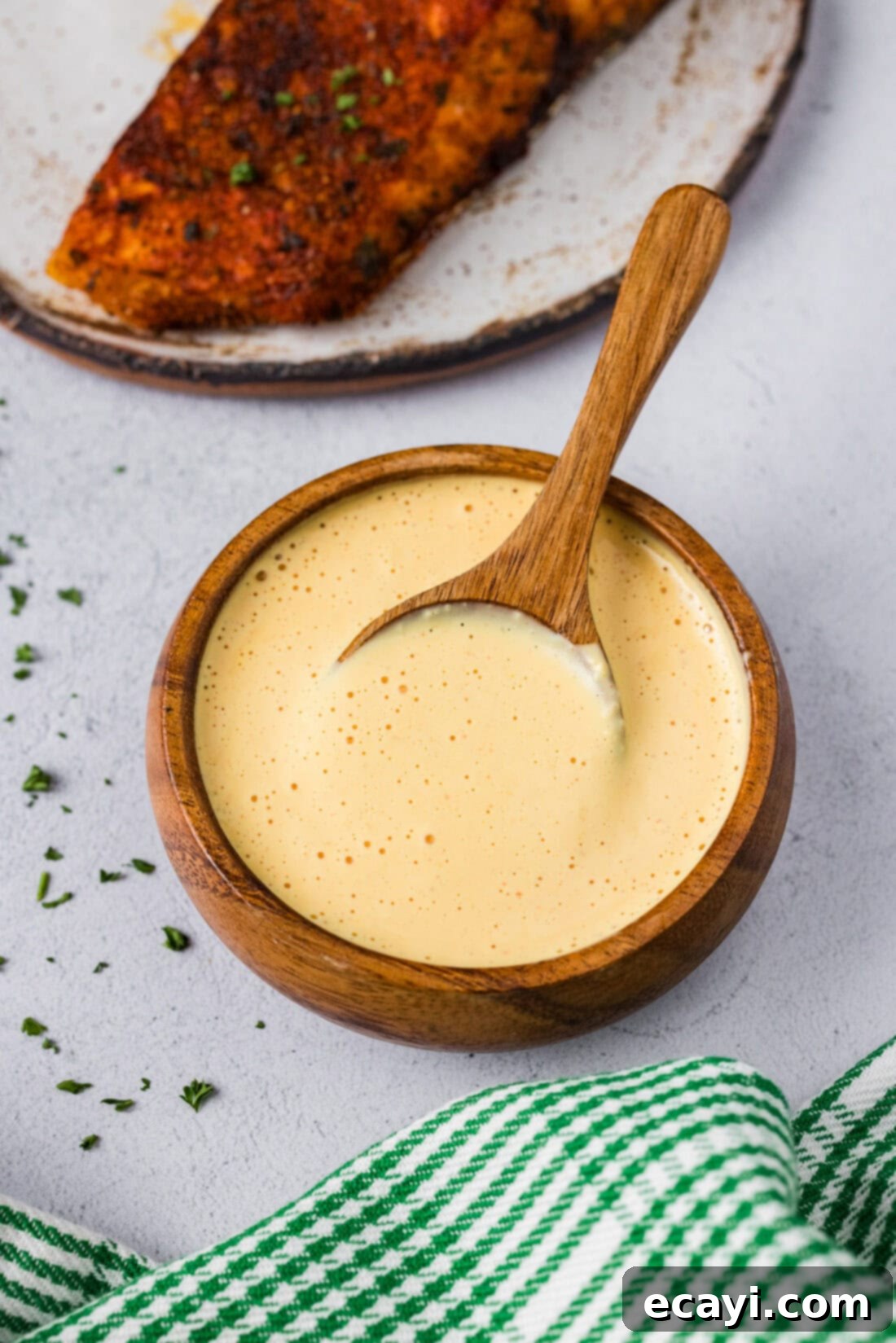
Delightful Serving Suggestions for Remoulade Sauce
The versatility of homemade remoulade sauce means it pairs wonderfully with a vast array of dishes, making it a go-to condiment for any occasion. Here are some delectable ways to enjoy this creamy, zesty dip:
- Seafood Specialties: It’s a natural match for almost any seafood. Serve it alongside fresh pan-seared or grilled fish, succulent crab cakes, crispy fried shrimp, or tender fried scallops. Its bright flavors cut through the richness of seafood beautifully.
- Fried & Breaded Delights: This sauce is a dream come true for anything fried or breaded. Think beyond just seafood! It’s fantastic with fried green tomatoes, onion rings, breaded chicken tenders, or even unconventional fried vegetables like cauliflower florets or green beans.
- Potato Perfection: Elevate your potato dishes. It makes an incredible dipping sauce for potato wedges, french fries, sweet potato fries, or even as a flavorful dressing for potato salad.
- Sandwiches & Burgers: Spread it on your favorite sandwiches, especially seafood po’ boys, fish sandwiches, or even a gourmet burger for an extra layer of flavor.
- Vegetable Dipper: Serve it as a creamy dip for raw vegetables like carrots, celery, bell peppers, or blanched asparagus. It adds a sophisticated touch to a simple veggie platter.
- Beyond the Obvious: Get creative! Use it as a base for an egg salad sandwich, a binder in chicken salad, or a dollop alongside roasted vegetables. The possibilities are truly endless!
Explore More Delicious Sauce Recipes
If you love making your own condiments and sauces from scratch, be sure to check out these other fantastic recipes that will elevate your cooking:
- Homemade Tartar Sauce
- Zesty Alabama White Sauce
- Velvety Lemon Cream Sauce
- Aromatic Rosemary Cream Sauce
I absolutely love to bake and cook, and it brings me immense joy to share my kitchen experiences and culinary creations with all of you! Remembering to visit the blog daily for new recipes can sometimes be a challenge, which is why I’ve made it easy for you. I offer a convenient newsletter delivered straight to your inbox every time a new recipe posts. Simply subscribe today and start receiving your free daily recipes, ensuring you never miss out on delicious inspiration!

Classic Creamy Remoulade Sauce
IMPORTANT – Detailed tips and frequently asked questions are available within the blog post to help perfect your sauce!
Print It
Pin It
Rate It
Save ItSaved!
Ingredients
- 1 cup full-fat mayonnaise
- 3 Tablespoons finely minced shallots
- 1 Tablespoon prepared horseradish sauce
- 2 teaspoons finely minced garlic
- 3 Tablespoons yellow mustard (or Dijon/Creole mustard for a sharper/spicier kick)
- 2 Tablespoons Louisiana-style hot sauce
- ¼ cup fresh lemon juice
Essential Equipment
-
Immersion Blender (or a standard blender/food processor)
Chef’s Notes & Variations
- Mustard Choices: Feel free to swap yellow mustard for Dijon for a more intense, sharper flavor, or use Creole mustard to introduce a distinctive spicy kick, commonly found in authentic Louisiana remoulade.
- Fresh Citrus is Key: For the best flavor, always use freshly squeezed lemon juice. Bottled lemon juice often lacks the bright, vibrant acidity that truly elevates this sauce. You’ll typically need about 1 1/4 lemons to yield 1/4 cup of juice, so ensure you have two on hand.
- Optional Add-ins: To further customize your remoulade, consider adding 1-2 teaspoons of drained, finely chopped capers to the mixture before blending. They introduce a briny, tangy element that many classic remoulade recipes feature. You could also experiment with a pinch of fresh parsley or dill for herbal notes.
Simple Instructions
-
Add all the measured ingredients, including mayonnaise, minced shallots, horseradish sauce, minced garlic, mustard, hot sauce, and fresh lemon juice, into the container of an immersion blender.
-
Blend the mixture using the immersion blender until it is completely smooth and creamy, with no visible chunks of aromatics remaining. This ensures a consistent and luxurious texture.
Storage & Make-Ahead Tips
- Refrigeration: To maintain its freshness and flavor, store your homemade remoulade sauce in an airtight jar or container in the refrigerator. It will keep well for 5-7 days.
- Freezing Not Recommended: We advise against freezing this sauce. Mayonnaise-based sauces tend to separate and lose their creamy texture upon thawing, which would compromise the overall quality of your remoulade. Since it’s incredibly quick and easy to prepare, it’s best enjoyed fresh or made a few days in advance for parties and events.
Nutrition Information
The recipes on this blog are tested with a conventional gas oven and gas stovetop. It’s important to note that some ovens, especially as they age, can cook and bake inconsistently. Using an inexpensive oven thermometer can assure you that your oven is truly heating to the proper temperature. If you use a toaster oven or countertop oven, please keep in mind that they may not distribute heat the same as a conventional full sized oven and you may need to adjust your cooking/baking times. In the case of recipes made with a pressure cooker, air fryer, slow cooker, or other appliance, a link to the appliances we use is listed within each respective recipe. For baking recipes where measurements are given by weight, please note that results may not be the same if cups are used instead, and we can’t guarantee success with that method.
